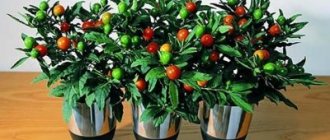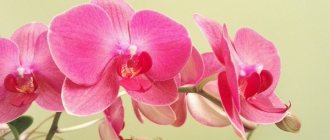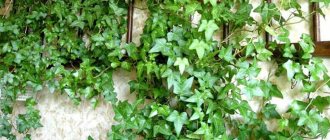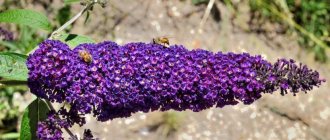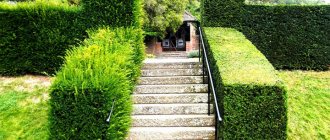Nightshade (Solanum) is a shrub from the nightshade family, the genus of which has about 1,700 species. South American countries with a tropical climate are considered the homeland of nightshade. In the wild, you can find annual and perennial herbaceous plants in the form of shrubs and trees, the stems of which can creep or stand upright, and the fruits are mostly poisonous. Among the nightshades there are also edible species such as potatoes, tomatoes and eggplants.
A small number of nightshade representatives are suitable for cultivation at home - the most common are edged, pepper and dark brown nightshades, the fruits of which are compared to small tomatoes, cherries or Mexican peppers. These Latin American machos are able to please their owners with a decorative look all year round. However, to do this you need to know some tricks of caring for this plant.
Indoor nightshade: a piece of bright summer in the middle of winter
Solanum (Solanum) is popularly known as: nightshade, coral bush, indoor cherry, Chinese cherry, Cuban cherry, Jerusalem cherry. The nightshade houseplant is a low, evergreen, deciduous shrub native to South America and the island of Madeira with oblong, glossy leaves.
The unusualness of nightshade remains all year round: the branches are simultaneously showered with flowers, green ovaries and bright orange ripe berries, which are really very similar to cherries.
Unfortunately, such a bright representative of the nightshade family is poisonous . It should not be kept in a house where there are small children who can pick and taste the poisonous berry. If the fruits of nightshade are not eaten, then there is nothing to be afraid of - the plant cannot cause any harm.
A little about physalis varieties
The Solanaceae family includes more than a hundred varieties of “common physalis”, which are divided into types: food (edible) and decorative.
Food Physalis
The edible fruits of physalis are consumed fresh, added to marinades, sauces prepared, dried, and canned. The juice is squeezed out of them and used as a seasoning for dishes. Dried fruits make amazing cake decorations. The pectin content in berries allows them to be used as gelatin for homemade preparations.
Varieties
More than 1,700 species of Solyanum grow in the tropics and some temperate regions. But we will consider only two of them, which are most often grown at home.
False pepper nightshade – S. pseudocapsicum. An erect evergreen shrub, growing up to 120 cm. Leaves with short petioles, oval or lanceolate, glabrous and slightly wavy.
The flowers are white, small, with five petals; the fruits are round, red or yellow, up to 1.5 cm in diameter. Originally from o. Madeira. Low-growing forms of decorative nightshade have been bred for indoor cultivation.
Pepper nightshade – S. capricasrum. Much smaller in size than false pepper, it has smaller berries and more tender shoots, green with a grayish tint. At home - in Uruguay and Southern Brazil, it grows in forests. The most popular varieties are: Craigii - with multi-colored fruits and Variegatum - a variegated variety.
Conditions of detention
Caring for an indoor nightshade flower assumes the optimal spring-summer air temperature for solanum is about +15 +25°C. With the approach of cold weather, the bush will need to lower the temperature level - to +13 +15°C. Lighting also plays a huge role. It should be borne in mind that nightshade loves bright light, but not heat.
humidity level in the room with a hygrometer - it should not be lower than 60%. If there is insufficient humidity, it is necessary to spray the plant daily and place it in a tray with wet expanded clay or pebbles once a week.
Reproduction
Homemade nightshade can be grown from seeds or cuttings. Depending on the planting method, the fruits may be more or less large. When grown from seeds, the bush usually grows strong and bears fruit well. When propagated by cuttings, the plant requires more time to adapt and take root in the new soil.
Nightshade seeds are sown in late February - early March, using the following substrate composition :
- peat 1 part;
- clay soil 3 parts;
- sand 1 part;
- drainage.
Nightshade seeds are sown at a distance of 20 mm from each other, pressed 1 cm into the ground, watered and placed on a windowsill with good lighting. When the shoots (after 8-10 days), they need to be shaded a little. Within a week, when the young shoots gain strength and produce 2-3 leaves, they are transplanted into separate containers. For grown 10-centimeter plants, pinch the top , remove the side shoots, giving the bush the shape of a ball.
Your long-time dream to know: how to grow ginger on a windowsill? We turned it into a valuable article.
Read with us about the rules for caring for asparagus at home.
Decoupage of a flower pot https://sad-doma.net/polezno/svoimi-rukami/dekor-gorshkov.html can be easily created with your own hands, find out how - follow the link.
Winter and summer nightshade care
Caring for a nightshade indoor plant in the cold and warm seasons has its own distinctive features. Features of seasonal care spring-summer .
- Young seedlings are watered as the soil dries.
- During the growth period, fertilizing is not needed. It is enough to carefully loosen the soil along the edges of the flowerpot so as not to injure the roots.
- When a nightshade blooms, it needs help transferring pollen from one flower to another (to pollinate).
- Upon reaching the age of 4-5 years, the plant is transplanted into a substrate mixed with turf.
- With the onset of summer, the flower is taken out into the open air to a shaded place protected from drafts.
- Water abundantly, adding fertilizer to the soil at least once every 2 weeks with a mixture of useful substances for tomatoes. Liquid fertilizers such as “Ideal” or “Rainbow” also give a good effect.
- Spray the leaves twice a day - morning and evening.
Features of seasonal care autumn-winter.
- As cold weather approaches, reduce the intensity of fertilizing and watering (water once every 10 days with soft water without chlorine). Nightshade should be in a dormant period from October to February.
- The pot with solyanum is placed in a cool, illuminated place with high humidity.
- Ventilate the plant once a week.
- At the end of February, the cherries will begin to wake up. During this period, you need to increase watering and start spraying.
Difficulties and reasons for their occurrence
Few fruits mean the bush is not pollinated enough. During the flowering period, you need to carefully transfer pollen from flower to flower with a soft brush or cotton swab.
Fruits and leaves fall . The cause is usually too high temperature and humidity in the room.
Pest infestation . The reason is insufficient air humidity.
Solyanum, like other nightshades, can be affected by whitefly . Greenish larvae settle on the back of the leaves and suck the juice out of them. First, the leaves become covered with spots, then dry out and fall off. If you touch a diseased plant, a swarm of small white flies flies out of it.
Aphids attack more often in the summer, especially if the pot of nightshade is taken out into the fresh air. Affects the tops of stems and leaves. In both cases, plants need urgent treatment with insecticides: actellik, decis, fitoverm, inta-vir, etc.
This is how exotic it is and unlike anyone else - Chinese cherry, also known as Jerusalem cherry, Cuban cherry, or simply nightshade . It belongs to the category of ornamental plants that do not tolerate loneliness. Feeling a loving heart nearby that cares and helps is the main thing for nightshade.
Give him a small piece of your kindness and attention, and he will delight you all year round with his lush greenery and unusual bright fruits.
And for those who like to know more, we invite you to watch a video about caring for a nightshade houseplant
Important!
Therefore, such a flower should be kept away from children and animals. Eating berries, even in small quantities, can cause disruption of the digestive system. But, at the same time, nightshade berries are used in folk medicine to treat a number of serious diseases, including cancer. Just don’t self-medicate – you need to take poisonous drugs under the supervision of a doctor.
The houseplant nightshade is often associated with the New Year and Christmas holidays. But in fact, this plant can delight with its flowers and fruits all year round. Like any other indoor plant, nightshade needs proper care, and for this you need to decide on the appropriate temperature conditions, optimal watering and options for its propagation.
Nightshade, or as it is also called - winter cherry, has about 900 representatives of the nightshade species, including the well-known potato. It blooms in summer, and by autumn beautiful cherry-like berries appear, which, as they ripen, change color from green to bright orange-red and remain on the plant all winter, until early spring.
Indoor nightshade
The perennial evergreen dwarf plant nightshade (solanum) can be a wonderful decoration for any room if you know how to care for solanum. Growing in the form of a bush or small tree, it has luxurious decorative qualities - all year round there are white flowers, dark green round ovaries and bright red fruits on nightshade branches. The trunk of indoor nightshade is woody, the leaves are small and elongated.
Nightshade is native to the island of Madeira and South America. The plant is considered an annual, but experienced gardeners have learned to extend its life. Caring for indoor nightshade involves annual replanting, providing good lighting and regular watering. To form a luxurious, lush crown, pruning is necessary.
Nertera - a delicate flower strewn with beads
Nerthera is an exotic plant with numerous decorative orange fruits, which has become a favorite of many gardeners.
This representative of the Rubiaceae family grows in countries with tropical and subtropical climates. Its homeland is New Zealand, Australia, Southeast Asia and South America. Nerthera is a perennial with creeping stems and small foliage located opposite. The plant blooms with white small flowers in May. After flowering, small berries with a diameter of one centimeter are formed. Nertera, densely strewn with fruits, received the names “coral moss” and “bead”.
Nightshade - home care
Despite the fact that indoor nightshade was brought from a tropical climate, the flower has perfectly adapted to the conditions of mid-latitudes. In the summer, it can be taken out into the garden or onto the balcony, to which the plant will respond with abundant flowering within a few days. If the plant is not provided with proper lighting, it will stretch out and there will be few flowers.
Video - caring for indoor nightshade
Temperature Nightshade is a heat-loving plant. In the summer months, the optimal temperature will be +20-+25 degrees. In winter, when active vegetation slows down, nightshade tolerates cooler temperatures, but not lower than +15 degrees.
Moistening and watering Indoor nightshade “loves” moisture, so on hot days you sometimes have to water it every day. The soil in the pot should be constantly slightly moistened so that the nightshade roots do not dry out completely. Experienced gardeners use special automatic watering devices to maintain sufficient moisture.
The plant needs to be sprayed with a spray bottle every few days. This procedure will provide a certain humidity. Also, do not install it near heating devices.
Replanting Indoor nightshade requires regular replanting. This is done at the moment when the plant’s flowers completely fall off. A mixture of peat, leaf soil and turf is ideal as a substrate. Expanded clay or clay shards must be placed at the bottom of the pot to ensure drainage.
Indoor nightshade - propagation by seeds and cuttings
Nightshade can be propagated by seeds and cuttings. In the first case, seeds from ripened fruits are used. They are sown in peat or any other loose soil and lightly sprinkled with sand. The soil should be constantly moistened with a spray bottle. It is better if the container with the seeds is placed in a warm place and covered with film. As they germinate, young plants dive 1-2 times.
Indoor nightshade - propagation by seeds
You can grow indoor nightshade faster by cuttings. The branches remaining after pruning are used as cuttings. They take root well in a substrate of peat and leaf soil and grow very quickly, producing new shoots.
Cuttings
Propagation using cuttings is carried out in the spring after the next pruning. Cut shoots are an excellent material for obtaining new plants. They are dipped in a nutritious and light mixture of peat and sand in equal parts to release roots.
Rooted cuttings are transplanted into separate pots using a good drainage layer and nutrient substrate, as when transplanting. Transplanted flowers are pinched, thus ensuring active branching of shoots. In the summer, indoor nightshade is repeatedly trimmed for the same purpose.
Propagation of this crop using seeds is no less successful. To do this, you will need healthy planting material and sifted leaf soil. The seeds are evenly laid out on the surface of the soil, then sprinkled with a centimeter layer of sand and moistened with a spray bottle.
Further care of the seedlings consists of ensuring a stable temperature regime of about twenty degrees. For these purposes, the plantings are covered with transparent film or polyethylene. Reproduction in this way makes it possible to obtain seedlings within two weeks. At the stage of the appearance of one leaf, the first picking of seedlings is carried out. As soon as the plants grow and produce several leaves, they are replanted.
The third transplantation of flowers is carried out separately into permanent containers. Caring for young plants is the same as for adult plants.
Diseases and pests of indoor nightshade
The main pests that very often attack indoor nightshade are whiteflies and aphids. To avoid trouble, it is best to constantly monitor the condition of the leaves. If the plant is already affected, insecticides are used against insects. You can protect nightshade from pest attacks by providing it with good ventilation and appropriate air temperature.
Other problems that can overshadow the owners of a charming bush include the lack of fruits, which give the plant its decorative appearance. In this case, artificial pollination of flowers will be required if the nightshade is indoors, or you can simply take it outside for a few days.
Another feature of this ornamental tree is its poisonous fruits. It is believed that in the homeland of nightshade they are used to prepare medicinal decoctions, but you still need to be careful and keep the berries away from children.
What is the appeal of indoor nightshade?
As you already understood, a houseplant with orange berries is nightshade, or solanum. Belongs to the nightshade family. Its homeland is the tropical part of South America.
There are various rumors about him. Some flora lovers are afraid to keep it at home. It turns out that the bright berries for which the flower is valued have poisonous properties. The fruits should not be eaten. Be careful if there are small children in the house. Place the plant on high, inaccessible shelves and cabinets, or avoid the flower altogether.
Nightshade does not produce any toxic fumes. If he just stands indoors, he won't cause any harm.
Nightshade is a small evergreen shrub. The leaves are shiny, oblong in shape. The fruits are large, similar to cherries, and have a fiery orange color.
A houseplant with orange berries, a photo of which will prove its beauty, will, with proper care, delight you with its ovaries and flowers. All this creates a beautiful picture. Therefore, nightshade is an excellent room decoration and addition to the interior.
Botanical description of the plant
Physalis - what is it?
Berry or flower? This is a vegetable belonging to the nightshade family, a close relative of tomatoes. The plant is highly decorative and has a range of useful and medicinal qualities. South and Central America is considered to be the homeland of “common physalis”. Found everywhere in Turkey, Iran, Central Asian countries, Bulgaria, India, and China. Here the plant is cultivated on an industrial scale. The reason for this popularity is the original taste, reminiscent of a mixture of pineapple and strawberries.
The height of the plant reaches 0.5-1 meters. The erect stems are randomly intertwined with each other, although they can be inclined towards the ground. The leaves are elongated and serrated along the edges. Single flowers grow directly on the stems. There may be 100 pieces or more. Immediately after flowering begins, the petals are colored green. After 1.5-2 months they acquire an orange or cream color.
In the depths of the flower a green fruit is born. During the ripening process, its color changes from green to lilac or red. The finished physalis berry has a sweet and sour taste with a slight bitter aftertaste.
The most popular varieties
The nightshade family has about 1,700 members. The most common types of solyanum are kept at home, as well as in gardens and greenhouses.
False pepper
The shrub is about 30-50 cm high. The leaves have a rich green color and grow quite densely. It blooms with small white flowers almost constantly. As the fruits ripen, they change color from green to red. The flower is kept mainly as an indoor plant due to its small size. A dwarf subspecies with a height of only 30 cm is presented at the flower market.
Pepper-shaped
The size of the pepper nightshade is smaller than that of the false pepper nightshade. The leaves are more fragile and have a grayish tint. The berries and flowers are small. The fruits stay on the branches for up to 4 months. A decoction of the berries is used as a gargle for sore throats, but you should not drink it.
Curly
This type of nightshade is an evergreen vine. The flowers are shaped like stars, the fruits are light yellow in color. It is unpretentious in maintenance and is often used to decorate gazebos and walls. Unlike many representatives of its species, it tolerates cold well. Therefore, it can be used on external facades.
Vendlana
Solyanum vendlana is a climbing evergreen shrub that can grow up to 6 m in height. There are small thorns on the branches. The leaves are long (up to 10 cm), dissected in shape. The lower foliage is larger (up to 25 cm). This species has very beautiful purple-lilac flowers in the shape of a bell.
Which type of nightshade to choose is a matter of taste. It is also worth considering the size of the flower. Large spreading representatives are suitable only for large houses.
Cultivated species and varieties of pyracantha
Cultivated varieties have striking differences from wild species. Firstly: they are more decorative. Secondly: they are chosen in such a way as to please the gardener more with abundant flowering and fruiting. Let's look at the main varieties and types of pyracantha that are suitable for growing in the garden and even at home.
Narrow-leaved pyracantha
A tall variety of pyracantha, up to 4 meters. The spreading shrub is used as a hedge. Dark stems branch well. They are covered with thick bark. Rare but very long fiery spines form on the shoots. The bush is prickly and can cause pain when pricked. The leaf blades are narrow and green. Narrow-leaved pyracantha blooms with small orange or red buds. The following varieties are known:
- Orange Glow - forms a straight bush, up to 3 meters high. The leaves are narrow, the thorns are small and sparse. In warm regions, the variety is grown as an evergreen variety of pyracantha. Leaves do not fall in winter. Shield inflorescences appear in early May, after which decorative orange berries are formed. The variety is not resistant to freezing and requires shelter for the winter.
- Golden Charmer - this variety is superior to the previous one in some characteristics. However, the frost resistance of pyracantha is no different. This crop has straight or arched stems with long thorns. In May, wild flowering begins, then inedible berries are formed. The shrub quickly recovers and takes root in regions with polluted air. Also, he is not afraid of dryness. The variety is decorative both during the flowering period and during fruiting with bright orange berries.
How can you propagate a plant?
Regarding nightshade, there are two methods of propagation - growing from seeds and cuttings.
Planting seeds
When propagating nightshade from seeds, it takes a certain amount of time. But plants grown in this way are larger and bear fruit better.
Solyanum seeds are planted in late winter and early spring. The most suitable soil consists of clay soil, peat and sand in a ratio of 3:1:1. The grains are planted at a distance of 2 cm from each other, slightly pressed into the ground, and then watered.
Transfer
It is recommended to replant in the first weeks of spring, before intensive growth begins. The soil should be loose and easily permeable to air. Do not forget about a good drainage layer, which may consist of expanded clay. It is needed so that excess liquid can freely leave the pot. First, the plant is cut back by approximately 1/3, and then planted in new soil.
This plant does not live very long. So, it soon grows out and loses its decorative effect. Therefore, some gardeners advise not to transplant nightshade, but to root a cutting taken from it.
Features of care in summer and winter
Indoor nightshade is unpretentious, although it also requires some attention. Its care varies depending on the season.
Location
If you want nightshade to bloom, you will have to find a place with good lighting for it. In the shade it loses its spherical shape, its sophistication and becomes too elongated. The ideal option is diffused light.
Winter. In winter and autumn, the flower is placed on southern windowsills.
Summer. From mid-April, the saltums are shaded so that solar radiation is not too intense. You can place the pot on the balcony. In summer, in country houses, nightshades are taken out onto the veranda.
Temperature
Winter. During the cold period, nightshade loves a temperature of 13-15C. With this mode, the flower will delight the owner with berries longer.
Summer. In the summer season, the plant is comfortable at standard room temperature. Does not tolerate constant heat well. If possible, nightshade is exposed to fresh air.
Watering
At any time, slightly moist soil is maintained for the solyanum, eliminating the formation of a “swamp”.
Winter. During the cold season, moderate watering is provided. The lower the air temperature, the slower the soil dries out.
Summer. When it is hot or the plant produces fruit, water it generously. Nightshade loves to be sprayed with warm water. The procedure is especially relevant in spring and summer.
Top dressing
Winter. In winter, the flower is fed with a half portion of fertilizer at monthly intervals or not fed at all.
Summer. If you want to see nightshade blooming, you will have to fertilize it. In summer, the flower should be fed twice a month. Purchase fertilizer designed for the flowering period.
Trimming
Nightshade is a plant that periodically requires pruning. Without this procedure, it loses its beautiful shape. Pruning is necessary in late spring and early summer, when the leaves of the plant turn yellow. To stimulate the growth of side shoots, pinch their ends and the main stem.
Transfer
The optimal time to transplant a flower is from the beginning of spring until the beginning of active growth. Before the procedure, the solyanum is cut by a third. Provide the seedling with loose soil where oxygen can pass well. Don't forget to put drainage at the bottom.
It is worth keeping in mind that a houseplant with orange berries quickly loses its decorative appearance. Therefore, flower growers prefer not to replant it, but to separate new cuttings.
After flowering
This decorative miracle blooms in spring or early summer with small, inconspicuous flowers collected in tassels of white or blue. But the main beauty appears after flowering in the form of elegant, bright fruits. Depending on the species, they may be orange, yellow or red. Fruitful period
continues until the beginning of winter. In false pepper nightshade it can last until February, so it has a very short “rest”.
Beautiful cross-sectional fruits are used for decoration and the formation of decorative bouquets.
What difficulties do flower growers face?
If you follow the rules of care, nightshade feels good indoors. However, certain problems may arise during cultivation.
The leaves are falling
Perhaps the problem is lack of moisture. The problem is especially acute in hot weather. This can also happen with excessive watering, when the roots begin to rot.
The berries are falling
If nightshade fruits begin to fall at the wrong time, it lacks light and humidity. It is worth moving the pot to a place where there is more light and spraying it more often.
No ovaries
The reason is that pollination did not occur. You can do this yourself using a soft bristle brush. Flowers are naturally pollinated only in the open air.
Spider mite
This pest affects many indoor plants. Its appearance is determined by the formation of small cobwebs and dark spots on the foliage. The plant begins to gradually dry out. To eliminate the problem, the foliage is sprayed with chemicals (Decis, Phosbecid), alternating with a soap solution.
